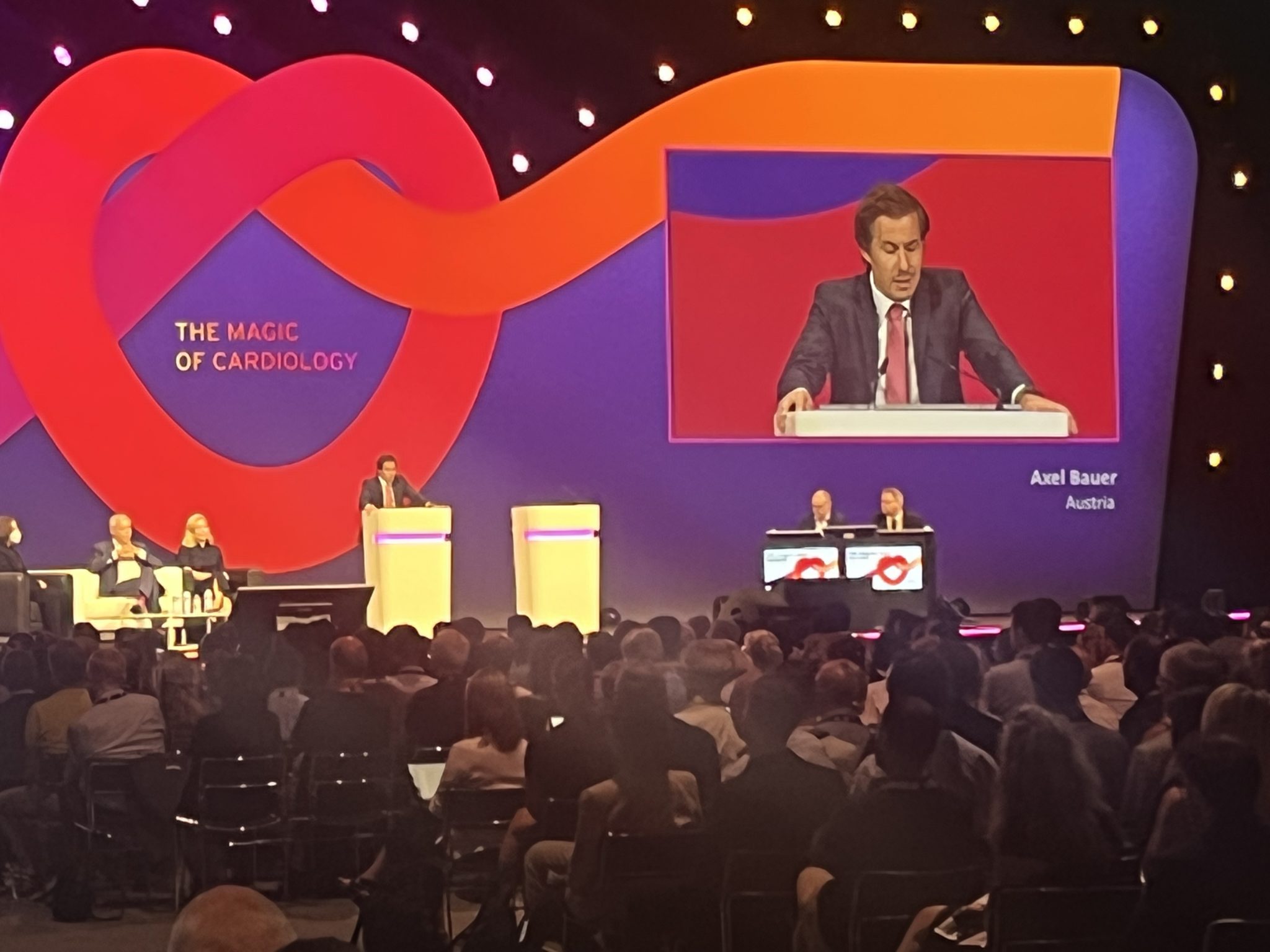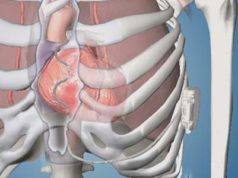
Screening for atrial fibrillation (AF) using a smartphone app more than doubled the detection and treatment rate in older people compared to routine screening, researchers behind the eBRAVE-AF trial have reported at the European Society of Cardiology (ESC) annual congress (26–29 August, Barcelona, Spain). The findings were delivered by Axel Bauer (Innsbruck Medical University, Innsbruck, Austria) during a hot line session on day three of the congress and published simultaneously in Nature Medicine.
The trial was a siteless, digital, randomised trial, which Bauer explained involved no physical contact with the participants. The study team targeted a large population of 67,000 German healthcare insurance policy holders, who met various risk criteria, and 5,551 of whom were enrolled in the trial.
Participants were randomly assigned to a six-month digital or a conventional strategy involving routine screening and other methods. Those in the digital arm downloaded a certified app to their own smartphone that measures pulse wave irregularities using the phone’s photoplethysmographic (PPG) sensor via the smartphone’s camera. They were required to measure twice a day for 14 days, then twice a week—prompted by push notifications through their phones.
If an abnormal rhythm was detected, the participants were posted a patch to record a 14-day electrocardiogram (ECG), results of which were evaluated by the research team. If deemed necessary, participants were asked to consult their local physician, who then made treatment decisions independently from the study. In both groups, information on newly detected atrial fibrillation was collected by the researchers via app-based questionnaires, telephone calls as well as insurance claims data.
Bauer reported that a total of 2,860 participants were assigned to digital screening and 2,691 participants were assigned to conventional screening arms. The primary efficacy endpoint was newly diagnosed AF within six months leading to initiation of oral anticoagulation by an independent physician, occurring in 38 participants (1.33%) in the digital arm and 17 (0.63%) in the conventional arm, for an odds ratio (OR) of 2.12 (95% confidence interval [CI] 1.19–3.76; p=0.010).
Those who did not reach the primary endpoint in the first six months were invited to take part in a second six-month study phase with crossover assignment to conventional or digital screening, respectively. This gave all participants the opportunity to undergo digital screening, increased the statistical power for secondary analyses, and enabled validation of the primary results. A total of 4,752 (85.6%) participants crossed over and entered the second study phase. Again, digital screening was superior to conventional screening in detecting AF that was then treated with oral anticoagulation (33 of 2,387 versus 12 of 2,365 participants; OR 2.95; 95% CI 1.52–5.72; p=0.001).
In secondary analyses, AF, PPG-detected AF, and abnormal PPG findings significantly predicted major adverse cardiac and cerebrovascular events (MACCE), with hazard ratios of 6.13 (95% CI 3.07–12.21; p<0.001), 3.22 (95% CI 1.01–10.33; p=0.049) and 2.74 (95% CI 1.25–6.00; p=0.012), respectively.
“The key messages of our study are, firstly, that a scalable digital screening strategy using ordinary smartphones more than doubles the detection rate of treatment-relevant AF in a broad, at-risk population,” Bauer told a press conference at ESC 2022, where he previewed the results of the trial.
“This means that anyone with a smartphone can screen him or herself for the world’s most important cardiac arrhythmia. This might have huge implications for the prevention of future stroke,” Bauer added, noting that future studies are needed to test whether improved AF diagnosis through digital technologies translates into better treatment outcomes.












